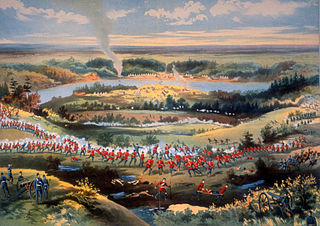
The North-West Rebellion, also known as the North-West Resistance, was an armed resistance movement by the Métis under Louis Riel and an associated uprising by First Nations Cree and Assiniboine of the District of Saskatchewan against the Canadian government. Many Métis felt that Canada was not protecting their rights, their land, and their survival as a distinct people.
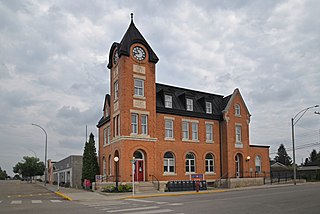
Battleford is a town located across the North Saskatchewan River from the City of North Battleford, in Saskatchewan, Canada.

Events from the year 1885 in Canada.

The Battle of Cut Knife, fought on May 2, 1885, occurred when a flying column of mounted police, militia, and Canadian army regular army units attacked a Cree and Assiniboine teepee settlement near Battleford, Saskatchewan. First Nations fighters forced the Canadian forces to retreat, with losses on both sides.
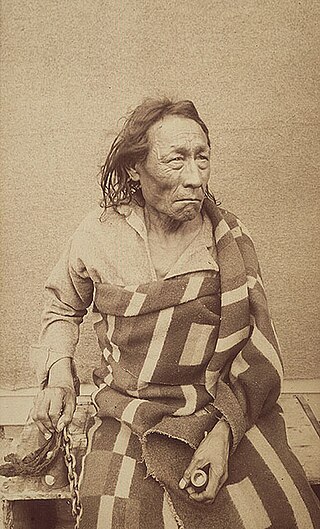
Big Bear, also known as Mistahi-maskwa, was a powerful and popular Cree chief who played many pivotal roles in Canadian history. He was appointed to chief of his band at the age of 40 upon the death of his father, Black Powder, under his father's harmonious and inclusive rule which directly impacted his own leadership. Big Bear is most notable for his involvement in Treaty 6 and the 1885 North-West Rebellion; he was one of the few chief leaders who objected to the signing of the treaty with the Canadian government. He felt that signing the treaty would ultimately have devastating effects on his nation as well as other Indigenous nations. This included losing the free nomadic lifestyle that his nation and others were accustomed to. Big Bear also took part in one of the last major battles between the Cree and the Blackfoot nations. He was one of the leaders to lead his people in the last, largest battle on the Canadian Plains.

Edgar Dewdney, was a Canadian surveyor, road builder, Indian commissioner and politician born in Devonshire, England. He emigrated to British Columbia in 1859 in order to act as surveyor for the Dewdney Trail that runs through the province. In 1870, Dewdney decided to take up a role in Canadian government. In this year, he was elected to the Legislative Council of British Columbia as a representative form the Kootenay region. In 1872, he was elected as a member of Federal Government for the Yale region representing the Conservative party. He was reelected to this position in 1874 and again in 1878. Dewdney served as Lieutenant Governor of the North-West Territories from 1879 to 1888, and the fifth Lieutenant-Governor of British Columbia from 1892 to 1897. Additionally, he served as the Indian commissioner in the North-West Territories from 1879 until 1888. In 1897, Dewdney retired from politics and began working as a financial agent until his death in 1916.
The Battle of Frenchman's Butte, fought on May 28, 1885, occurred when a force of Cree, dug in on a hillside near Frenchman's Butte, was unsuccessfully attacked by the Alberta Field Force. It was fought in what was then the District of Saskatchewan of the North-West Territories.

Pîhtokahanapiwiyin, also known as Poundmaker, was a Plains Cree chief known as a peacemaker and defender of his people, the Poundmaker Cree Nation. His name denotes his special craft at leading buffalo into buffalo pounds (enclosures) for harvest.

The Battle of Fish Creek, fought April 24, 1885 at Fish Creek, Saskatchewan, was a major Métis victory over the Canadian forces attempting to quell Louis Riel's North-West Rebellion. Although the reversal was not decisive enough to alter the ultimate outcome of the conflict, it was convincing enough to persuade Major General Frederick Middleton to temporarily halt his advance on Batoche, where the Métis would later make their final stand.

The District of Saskatchewan was a regional administrative district of Canada's North-West Territories. It was formed in 1882 was later enlarged then abolished with the creation of the provinces of Saskatchewan and Alberta in 1905. Much of the area was incorporated into the province of Saskatchewan. The western part became part of Alberta, and the eastern part is now part of Manitoba.

Fort Battleford was the sixth North-West Mounted Police fort to be established in the North-West Territories of Canada, and played a central role in the events of the North-West Rebellion of 1885. It was here Chief Poundmaker was arrested, and where six Cree and two Stoney men were hanged for murders committed in the Frog Lake Massacre and the Looting of Battleford. In reference to the hanging, Prime Minister John A. Macdonald said in a letter that "the executions... ought to convince the Red Man that the White Man governs."
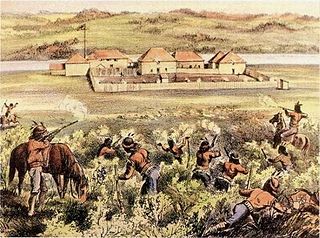
The Battle of Fort Pitt was part of a Cree uprising coinciding with the Métis revolt that started the North-West Rebellion in 1885. Cree warriors began attacking Canadian settlements on April 2. On April 15, they captured Fort Pitt from a detachment of North-West Mounted Police.
The Battle of Loon Lake, also known as the Battle of Steele Narrows, concluded the North-West Rebellion on June 3, 1885, and was the last battle fought on Canadian soil. It was fought in what was then the District of Saskatchewan of the North-West Territories, at what is now known as Steele Narrows at Makwa Lake, in Saskatchewan's Steele Narrows Provincial Park. Steele Narrows is a channel that separates Sanderson Bay from Makwa Lake.

The Frog Lake Massacre was part of the Cree uprising during the North-West Rebellion in western Canada. Led by Wandering Spirit, young Cree men attacked officials, clergy and settlers in the small settlement of Frog Lake in the District of Saskatchewan in the North-West Territories on 2 April 1885. Nine settlers were killed in the incident.

Fort Pitt Provincial Park is a provincial park in the Canadian province of Saskatchewan. Fort Pitt was built in 1829 by the Hudson's Bay Company (HBC) and was a trading post on the North Saskatchewan River in Rupert's Land. It was built at the direction of Chief Factor John Rowand, previously of Fort Edmonton, to trade for bison hides, meat and pemmican. Pemmican, dried buffalo meat, was required as provisions for HBC's northern trading posts.
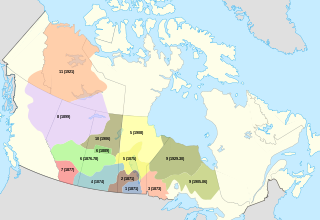
Wandering Spirit was a war chief of a band of Plains Cree. There is little information on Wandering Spirit's life. Most of what is known begins shortly before the 1885 Frog Lake Massacre and ends with the Canadian justice system's convicting him of murder and hanging him. However, there is some information regarding his role within the Plains Cree people.

Francis Jeffrey Dickens was the third son and fifth child of Victorian English novelist Charles Dickens and his wife Catherine Dickens née Hogarth.
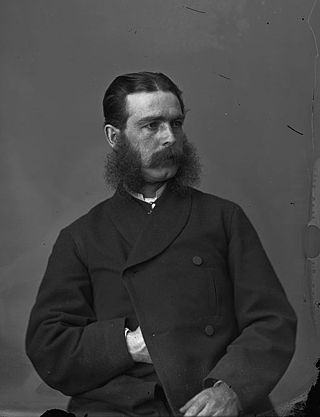
Charles Borromée Rouleau was a 19th-century Canadian politician, lawyer, judge and writer. He served as stipendiary magistrate and justice of the Supreme Court of the North-West Territories, as well as legal advisor to the Northwest Territories Legislature.

The Looting of Battleford began at the end of March, 1885, during the North-West Rebellion, in the town of Battleford, Saskatchewan, then a part of the Northwest Territories.

The North-West Mounted Police (NWMP) played a significant role during the North-West Rebellion in Canada in 1885. The NWMP suffered early reverses and, although they supported the relief force sent to the region under the command of Major-General Frederick Middleton, their performance was heavily criticized. Commissioner Acheson Irvine resigned from his command of the police as a result.

















